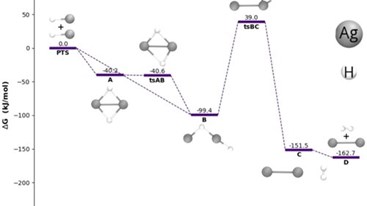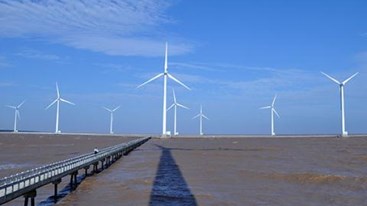Monday, 22/12/2025 | 00:32 GMT+7
Solar concentrators usually do a good job in focusing the Sun’s energy to a small area of covered by a high-efficiency solar cell, which is much more expensive than regular ones. These days, MIT chemical engineers have come up with a new approach to concentrate solar power by 100 times without needing any lenses, mirrors or anything else than the solar cell itself.
They used nanotubes which form antennas that capture and focus the light in a manner never seen before.
Michael Strano, the Charles and Hilda Roddey Associate
Professor of Chemical Engineering and his colleagues Jae-Hee Han and Geraldine
Paulus, called their new carbon nanotube antenna the “solar funnel”.
Strano’s antenna contains some 30 million carbon nanotubes, has 10 micrometers in length and 4 micromethers in thickness. The difference from other nanotube fibers is that this one has two layers made from nanotubes having different electrical properties (bandgaps).
In any material, electrons can exist at different energy levels. When a photon strikes the surface, it excites an electron to a higher energy level, which is specific to the material. The interaction between the energized electron and the hole it leaves behind is called an exciton, and the difference in energy levels between the hole and the electron is known as the bandgap.
The inner layer of the antenna contains nanotubes with a small bandgap, and nanotubes in the outer layer have a higher bandgap. That’s important because excitons flow from high to low energy. In this case, that means the excitons in the outer layer flow to the inner layer, where they can exist in a lower (but still excited) energy state.

The nanotube antenna focuses all of the excitons resulted from the collision of photons with the material, towards its center. Asolar cell using this kind of technology would have to have a core of semiconducting material built inside the nanotube antenna.
The interface between the semiconductor and the nanotubes would separate the electron from the hole, with electrons being collected at one electrode touching the inner semiconductor, and holes collected at an electrode touching the nanotubes. This system would then generate electric current. The efficiency of such a solar cell would depend on the materials used for the electrode, according to the researchers. For the moment, the absorbed energy loss is of about 13 percent. Still, the team intends to reduce that figure to 1 percent.
So far, carbon nanotubes had high prices, but in recent years they started being produced by several chemical companies in mass quantities, and their prices dipped, so if they will be used extensively in making solar cells, they won’t impact their prices too much.
Source: greenoptimistic.com








 Webinar 2: “Financial Support for Energy Efficiency Enterprises – Opportunities and Challenges”
Webinar 2: “Financial Support for Energy Efficiency Enterprises – Opportunities and Challenges”
 Vietnamese enterprises achieve green growth and cut costs through energy efficiency
Vietnamese enterprises achieve green growth and cut costs through energy efficiency
 Capacity Building for Program Implementing Entity
Capacity Building for Program Implementing Entity
 Enhance Energy Efficiency Knowledge for Managers of Cement Industrial Enterprises
Enhance Energy Efficiency Knowledge for Managers of Cement Industrial Enterprises
 Promoting Energy Efficiency for Technical Staff of Brick and Ceramic Sector
Promoting Energy Efficiency for Technical Staff of Brick and Ceramic Sector
 Capacity building for participating financial institutions of the VSUEE Project
Capacity building for participating financial institutions of the VSUEE Project
 Capacity building for participating financial institutions in Ho Chi Minh City
Capacity building for participating financial institutions in Ho Chi Minh City